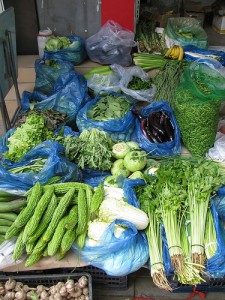The New York Botanical Garden is following its Edible Garden thing of a couple of years back with a Family Garden, aimed at schoolchildren. And it has made it to the network news. No information on whether the tykes are being brainwashed about heirlooms and sustainable agriculture. But I hope so.
LATER: And Michelle Obama gets in on the act too.
 So, in retaliation for Europe protecting Roquefort, Stilton cheese and Scottish farmed salmon (sic.), among other agrobiodiversity products, the Chinese have slapped Protected Denominations of Origin (PDO) on
So, in retaliation for Europe protecting Roquefort, Stilton cheese and Scottish farmed salmon (sic.), among other agrobiodiversity products, the Chinese have slapped Protected Denominations of Origin (PDO) on